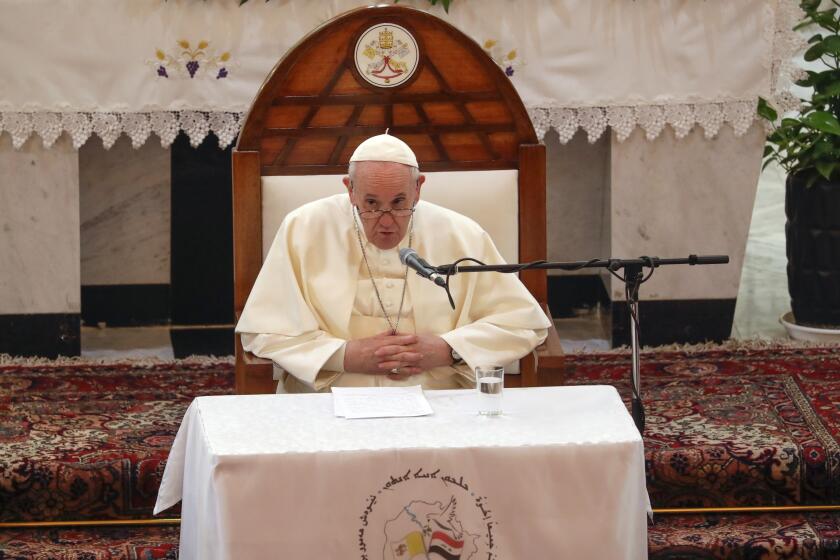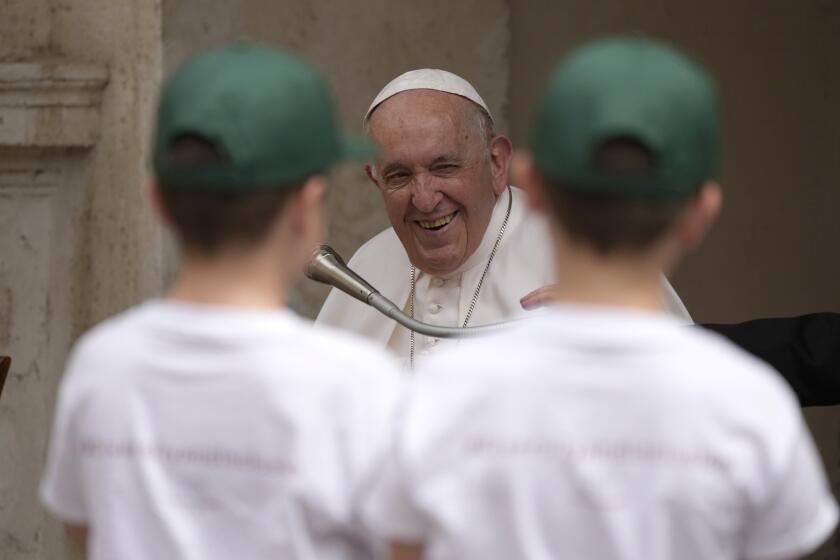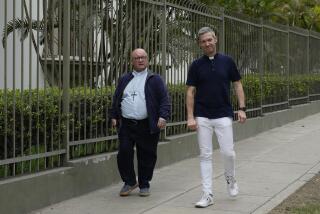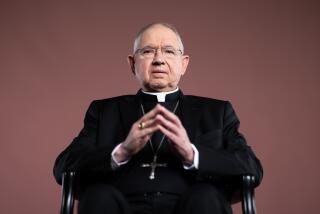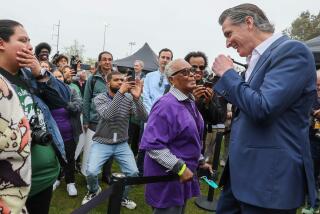Brazilian archbishop set to make history as first cardinal from Amazon rainforest
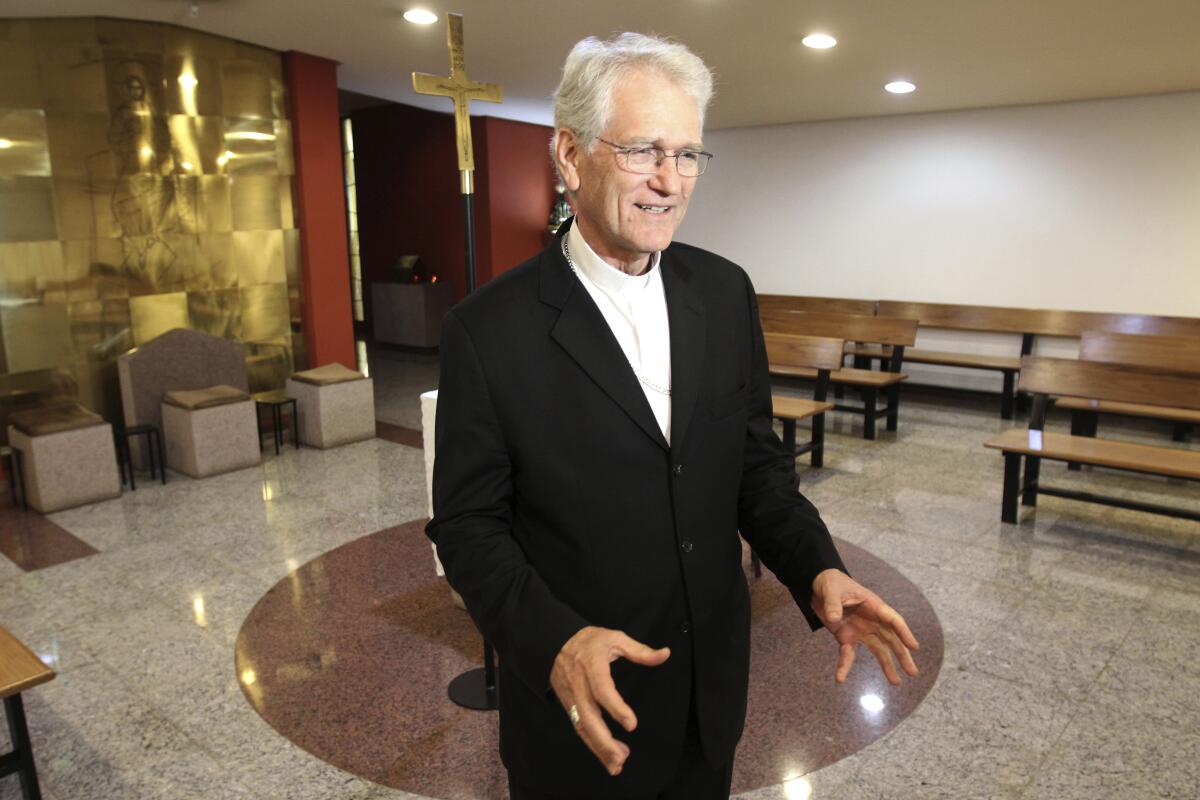
RIO DE JANEIRO — When the Roman Catholic archbishop of the Brazilian city of Manaus, Leonardo Steiner, kneels before Pope Francis on Aug. 27, the Brazilian clergyman will make history as the first cardinal to come from the Amazon region.
“The communities feel that the distance between Rome and the Amazon is now smaller,” Steiner told the Associated Press in a written interview. “Perhaps this is the reason for the Amazonian people’s joy with Pope Francis’ move.”
Steiner attributed his selection to four priorities of the pope: the desire to do more missionary work in the Amazon; to be attentive to the poor; to care for the Amazon “as our common home”; and to be a church that “knows how to contribute to the autonomy of Indigenous people.”
Sprawling across nine countries, the Amazon region is larger than the European Union. It is home to 34 million people, of whom more than 3 million are Indigenous, belonging to around 400 ethnic groups, according to the Catholic Church.
There is a religious lens through which to see the acute environmental struggles playing out in the region as well: The Catholic Church’s socio-environmental agenda is a contentious issue with numerous Brazilian Pentecostal churches. These have a powerful caucus in Brazil’s National Congress and have embraced the pro-agrobusiness beef caucus. Both Pentecostals and cattle industry advocates belong to far-right President Jair Bolsonaro’s political base.
Cardinals are the most senior clergy below the pope. Often called “red hats” because of the color of their skullcaps, they serve as papal advisors. More important, together they select each pope, the leader of the world’s 1.3 billion Catholics.
Pope Francis sidesteps a fraught Catholic Church issue that’s even involved retired Pope Benedict XVI. Instead he focuses on the Amazon rain forest.
For observers of the church, it will come as no surprise that Francis, who is Argentinean, has finally named an Amazonian cardinal, given the importance the region has had for his papacy and the attention he has shown it.
Francis was first moved by the plight of the vast Amazon Basin in 2007, during the Episcopal Council of Latin American Bishops Conference, according to the Brazilian priest and historian José Oscar Beozzo. Francis was at that time the archbishop of Buenos Aires, and helped write the official account of the conference. The final text advocates for the preservation of both the Amazon and Antarctica.
Francis then dedicated an entire synod, or meeting, of bishops from the region in 2019. In his environmental awakening, crystallized in his 2015 encyclical “Praised Be,” he advocates for the preservation of the region’s biodiversity and portrays Indigenous peoples as forest guardians. In 2018, he also visited Madre de Dios, a region in the Peruvian Amazon devastated by illegal mining and logging.
The pope made Steiner archbishop of Manaus just after the Amazon synod ended, tapping a Franciscan who clearly shares the same ethos and ideology as the pope’s namesake, St. Francis. The pope may have noticed Steiner because he had a prominent position in the Brazilian bishops’ conference and was acting as its secretary general from 2011 to 2019. He also has serious Roman credentials, having served as the secretary general of the Franciscans’ Pontifical Antonianum University in Rome, one of the major pontifical universities.
Italian and Catholic media have been rife with unsourced speculation that the 85-year-old Pope Francis may step down.
The Amazon synod was also notable for the theft of three Indigenous statues featuring a naked pregnant woman, which were part of a procession in the Vatican at the start of the meeting. Conservative critics had blasted the synod’s “pagan” prayers and idolatry, and, early one morning, thieves entered a Vatican-area church where the statues were displayed and tossed them into the Tiber River.
Francis publicly apologized to the Indigenous leaders for the theft, and the statues were removed from the river in time for the end of the meeting. One was prominently displayed in the synod hall as the synod fathers voted on the final recommendations.
The main thief, an Austrian far-right activist named Alexander Tschugguel, went on to become something of a celebrity within the traditionalist opposition to Francis because of the stunt. In the years since, the stunt itself has come to crystallize the loathing that some conservatives and traditionalists have for Francis.
To Beozzo, the historian, Pope Francis is promoting a kind of “patriarchy” in the Amazon, similar to the five patriarchies in places such as Jerusalem and Constantinople during the early Middle Ages, an effort to elevate the status of the Amazon within the Catholic structure.
Start your day right
Sign up for Essential California for the L.A. Times biggest news, features and recommendations in your inbox six days a week.
You may occasionally receive promotional content from the Los Angeles Times.
The synod of bishops from the Amazon, the creation in 2020 of the Ecclesial Conference of the Amazon Region and now Steiner’s elevation are all part of Francis’ goal of placing the world’s largest rainforest center stage, Beozzo said.
“His choice begins a very important moment of considering the Amazon as a region with its own church dynamics, one which welcomes the prominence of the region’s Indigenous peoples.”
Steiner, 71, is one of 21 new cardinals announced by Pope Francis in late May. They include Robert McElroy, bishop of San Diego; Giorgio Marengo, who has been the apostolic prefect of Ulaanbaatar, Mongolia; and Peter Okpaleke, bishop of Ekwulobia, Nigeria.
More to Read
Sign up for Essential California
The most important California stories and recommendations in your inbox every morning.
You may occasionally receive promotional content from the Los Angeles Times.
